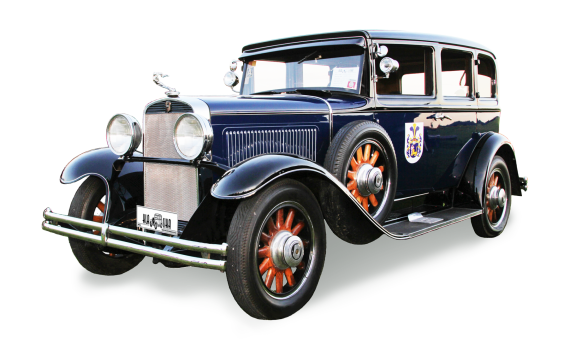
Cars of the Club: 1931 Nash 6-60
Category:Garage,ArticlesNash Motors (1916 – 1954) was founded in 1916 by former General Motors president Charles W. Nash (1864-1948) who acquired the Thomas B. Jeffery Company. Jeffery’s best-known automobile was the Rambler whose mass production from a plant in Kenosha, Wisconsin began in 1902.
The first Nash car appeared in the autumn of 1917. The Nash Model 671 was the first vehicle produced to bear the name of the new company’s founder. Nash created a new lineup of cars for the 1918 model year. The new cars were aimed at the middle of the market, and consisted of the 681 (touring), 682, 683 (roadster), 684 (sedan), and 685 (coupe). They used an overhead-valve straight-six engine, marketed as the „valve in head” engine; and the bodies featured flow-through ventilation, helping keep the air fresh inside. By 1920, in an admittedly expanding market, Nash was selling double the Jeffery record of 1914. In that year, Nash started a new company, LaFayette, in Indianapolis, selling an expensive luxury car; the company failed, but Nash bought it in 1924 to use its factory for a new Ajax line of cars (starting in 1925); the four door sedan and touring car had moderate sales, and were later re-absorbed as the Nash Light Six, which boosted their sales; Nash showed it cared for its buyers by selling an aftermarket “conversion kit” including hubcaps, a new radiator badge, and other logo-and-name components that turned an Ajax into a Nash, helping its resale value.
Through the 1920s, Nash continued to sell new cars, including one of the first to have both a low price and a closed cabin: the Carriole, a four-cylinder sedan at $1,350.
In 1928, a new 400 series, with six cylinder engines, had four-point engine mounts; the crankshafts had seven main bearings. The new engines had two spark plugs per cylinder to improve combustion efficiency (especially important given the head technology of the era), improving gas mileage and increasing power; it was marketed as “Twin Ignition.” Like all the Nash cars before it, these were a success.
The stock market crash of October 1929 came at a bad time for many automakers; Nash itself had been working on the largest cars and engines of its history — Twin-Ignition eight-cylinder cars, using a 299-cubic inch straight-eight engine that produced a smooth hundred horsepower, with overhead valves and a nine-bearing crank. The cars rode on a longer wheelbase, had synchronized transmissions, included freewheeling and automatic centralized chassis lubrication, and had an adjustable ride (set from the dashboard). They were successfully designed to look like luxury cars, and perhaps that was part of the key to their popularity even in the Depression; they provided high quality, durability, and the look of luxury at a relatively low price.  The 1932 models added to the formula, with the 142-inch-wheelbase Ambassador series. The company’s reputation for value must have helped to bring it through the Depression unscathed and able to sell the largest cars of its history.
The 1932 models added to the formula, with the 142-inch-wheelbase Ambassador series. The company’s reputation for value must have helped to bring it through the Depression unscathed and able to sell the largest cars of its history.
The early 1930 was a difficult time for almost every automobile manufacturer. The Great Depression bankrupted most companies. GM and Nash were the only companies to make a profit in 1932.
But let us return to the year 1931 when the company started producing Nash 600 series cars. The Nash 660 (pronounced Six-Sixty) was a series of six-cylinder cars of the Nash Motors Company in Kenosha. They were in many ways similar to the 400 series cars. The 660 took over the chassis with a 2,902 mm wheelbase from its predecessor. His side controlled six-cylinder engine with 3,299 cc (bore x stroke = 79.4 mm x 111.1 mm) came from the previous type. Now, however, he made 65 bhp (48 kW) at 3.200/min. The drive and brake components (single-plate dry clutch, three-speed transmission with floor shift, rear wheel drive, mechanical brakes on all four wheels) also came from the previous model year. Standard equipment included: automatic radiator shutters, central lubrication system, electric clock, safety glass, oil filter and automatic fan clutch. Optional equipment on this car included dual side-mounted spares, 6.50 x 19 wheels and a rear-mounted trunk. There was a 2 – and a 4-door sedan, two different two-door coupe and a 4-door Sport Phaeton.
In the same 1931, Model 660 was replaced by the Model 870.
In 1931, all series and models of Nash brand cars were manufactured 38,616 units
Nash 6-60 specifications:
Model – 660
Year – 1931
Body Type – sedan
No. Doors – 4
No. of seats – 5
Weight – 1240 kg / 2,800lbs
Engine position – front
Drive wheel – rear
Number of cylinders – inline 6
Bore & Stroke – 3 1/8 & 4 3/8 inches
Fuel – petrol
Fuel system – carburetor
Cooling – liquid
Capacity – 4.02 liter / 201.3 cu. in.
Brakes – internal expanding on 4 wheels mechanical
Transmission – 3-speed
Wheelbase – 2902 mm / 114 1/4 inches
Wheel Type – artillery
VIN/Serial no. – R249,708 to R261,948
Original Base Price – $ 845.00 USD
Owner – Klementas and Gintautas Sakalauskas
Dainius Nagele photos

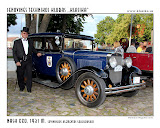
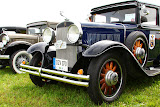
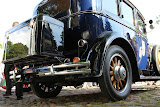
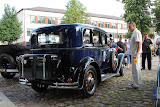

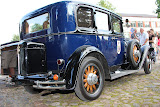


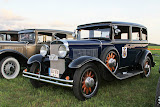

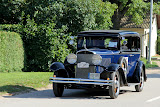
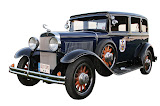
You must be logged in to post a comment.